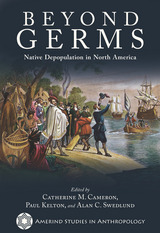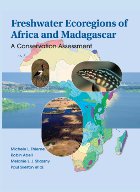
Beyond Germs: Native Depopulation in North America challenges the “virgin soil” hypothesis that was used for decades to explain the decimation of the indigenous people of North America. This hypothesis argues that the massive depopulation of the New World was caused primarily by diseases brought by European colonists that infected Native populations lacking immunity to foreign pathogens. In Beyond Germs, contributors expertly argue that blaming germs lets Europeans off the hook for the enormous number of Native American deaths that occurred after 1492.
Archaeologists, anthropologists, and historians come together in this cutting-edge volume to report a wide variety of other factors in the decline in the indigenous population, including genocide, forced labor, and population dislocation. These factors led to what the editors describe in their introduction as “systemic structural violence” on the Native populations of North America.
While we may never know the full extent of Native depopulation during the colonial period because the evidence available for indigenous communities is notoriously slim and problematic, what is certain is that a generation of scholars has significantly overemphasized disease as the cause of depopulation and has downplayed the active role of Europeans in inciting wars, destroying livelihoods, and erasing identities.

As part of a global effort to identify those areas where conservation measures are needed most urgently, World Wildlife Fund has assembled teams of scientists to conduct ecological assessments of all seven continents. Freshwater Ecoregions of Africa and Madagascar is the latest contribution, presenting in a single volume the first in-depth analysis of the state of freshwater biodiversity across Africa, Madagascar, and the islands of the region. Looking at biodiversity and threats in terms of biological units rather than political units, the book offers a comprehensive examination of the entire range of aquatic systems.
In addition to its six main chapters, the book includes nineteen essays by regional experts that provide more depth on key issues, as well as six detailed appendixes that present summary data used in the analyses, specific analytical methodologies, and a thorough text description for each of Africa's ninety-three freshwater ecoregions.
Freshwater Ecoregions of Africa and Madagascar provides a blueprint for conservation action and represents an unparalleled guide for investments and activities of conservation agencies and donor organizations.
READERS
Browse our collection.
PUBLISHERS
See BiblioVault's publisher services.
STUDENT SERVICES
Files for college accessibility offices.
UChicago Accessibility Resources
home | accessibility | search | about | contact us
BiblioVault ® 2001 - 2024
The University of Chicago Press









